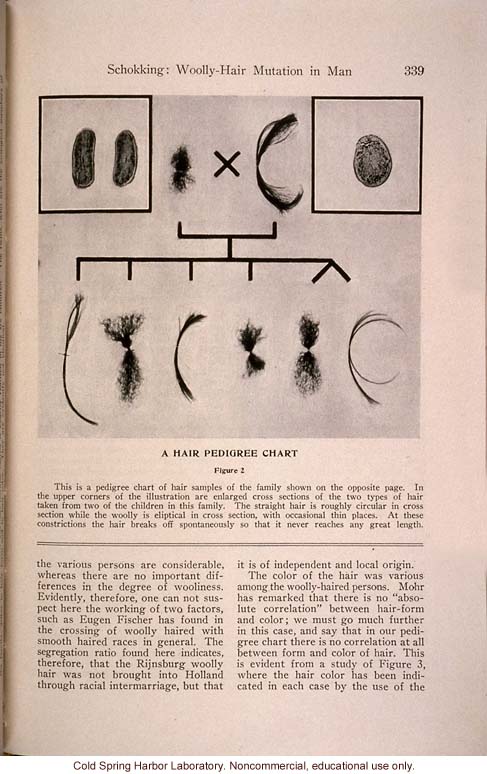Schokking: Woolly-Hair Mutation in Man 339
[figure]
A Hair Pedigree Chart
Figure 2
This is a pedigree chart of hair samples of the family shown on the opposite page. In the upper corners of the illustration are enlarged cross sections of the two types of hair taken from two of the children in this family. The straight hair is roughly circular in cross section while the woolly is eliptical[sic] in cross section, with occasional thin places. At these constrictions the hair breaks off spontaneously so that it never reaches any great length.
[double score width of page]
the various persons are considerable, whereas there are no important differences in the degree of wooliness. Evidently, therefore, one can not suspect here the working of two factors, such as Eugen Fischer has found in the crossing of woolly haired with smooth haired races in general. The segregation ratio found here indicates, therefore, that the Rijnsburg woolly hair was not brought into Holland through racial intermarriage, but that it is of independent and local origin.
The color of the hair was various among the woolly-haired persons. Mohr has remarked that there is no "absolute correlation" between hair-form and color; we must go much further in this case, and say that in our pedigree chart there is no correlation at all between form and color of hair. This is evident from a study of Figure 3, where the hair color has been indicated in each case by the use of the
[end]


